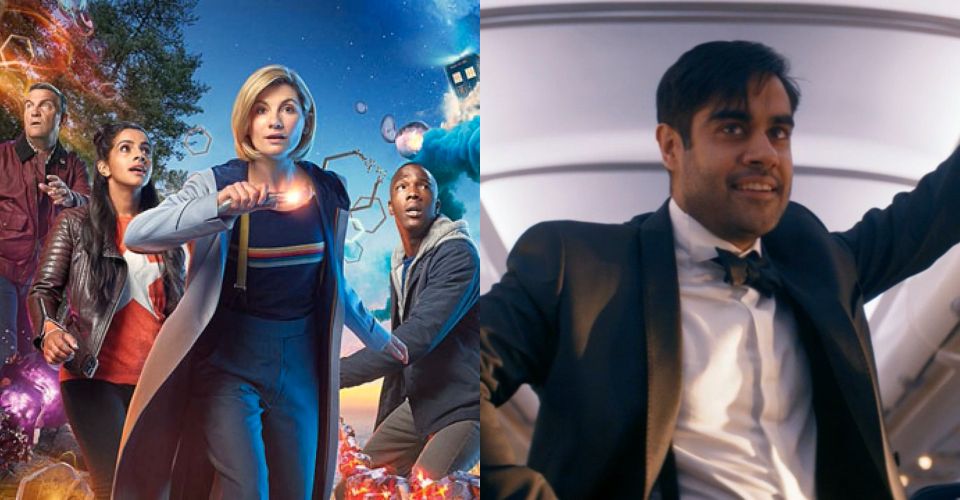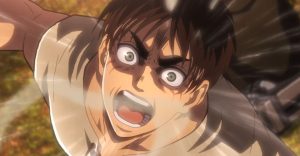Doctor Who: 10 Ways Chris Chibnall Is The Best Showrunner

During his time as Doctor Who‘s showrunner, Chris Chibnall has proven himself to be one of the show’s most influential creatives. He has ushered the show into a bright new era of diversity and representation, proving that there is space for all in the Doctor’s trusty TARDIS.
Many of his choices are likely to leave a significant impact on Doctor Who‘s future, as Chibnall has opened the door to previously unexplored storytelling avenues, whilst remaining true to the heart of the show. The writer’s efforts have brought a truly fresh slant to Doctor Who, which may make him the sci-fi series’ best showrunner to date.
10 Casting The First Female Doctor

Also considered one of the best things Jodie Whittaker has done, one of Chibnall’s best decisions has been casting the first female Doctor. In January 2017, when Peter Capaldi announced he was leaving Doctor Who, speculation was rife that the next Doctor would be played by a woman. These theories were proven right when Broadchurch actor, Jodie Whittaker, was cast in the role.
Casting a woman in the lead part after previously having been played exclusively by white British men was without a doubt a bold choice to make, but one that absolutely paid off. The move not only opened up the role to a larger proportion of diverse actors but also gifted young girls their own version of the Doctor to look up to.
9 A Grounded Approach

With a show as heightened and fantastical as Doctor Who, it can be hard sometimes for more casual audiences to relate to the situations that the Doctor and their companions find themselves embroiled in. This is something that Chibnall clearly understands, having decided to pay particular focus to the companions’ personal circumstances.
In the first episode, “The Woman Who Fell To Earth,” Chibnall effortlessly introduces viewers to the lives of new companions Graham, Ryan, and Yaz, by giving a glimpse into their everyday lives. Throughout both series, he returns to their present time, showing how the companions’ friends and loved ones are affected by their disappearances. This makes them instantly relatable to viewers, as it normalizes their otherwise exaggerated experiences, and grounds them within a human context.
8 The Yorkshire Setting

Since Doctor Who returned to screens in 2005, the show’s “Present Day” locations have largely circulated around London. This has resulted in Earthbound stories becoming somewhat predictable in later years, with most episodes revolving around alien invasions taking place within the UK capital. Thankfully Chibnall has rectified this, by opting to set most “Present Day” stories within the Yorkshire city of Sheffield.
This change of location has brought a real breath of fresh air to proceedings, with Earthbound stories being free to show new locations that had not previously featured in prior series. Gone are the somewhat repetitive shots of St. Paul’s Cathedral and Big Ben, and in its place is some new establishing imagery of the Sheffield skyline.
7 Casting Bradley Walsh

One of the most impressive aspects of Doctor Who since its 2005 revival is how it has continued to attract major British names. The new series has seen famous faces, such as Catherine Tate and Matt Lucas, take on the part of the Doctor’s companions. However, perhaps one of the most inspired choices has been Chris Chibnall’s decision to cast Bradley Walsh as Graham O’Brien.
It’s hard to imagine how Chibnall could have cast this role any better, with many considering Graham to be one of Doctor Who’s best companions. Walsh offers both a funny and tragic performance as the Doctor Who companion, who soon finds himself a widow after his wife, Grace, dies in the series 11 opener.
6 Arachnids In The UK

Doctor Who is known for its horror tropes, with many viewers over the years having to ‘hide behind the sofa’ from the series’ monstrous creations. The Chibnall era is no exception, with a few episodes sending viewers trembling in fright. Perhaps the most successful is “Arachnids In The UK,” penned by Chris Chibnall, which presented one of the show’s most terrifying takes on spiders.
The episode is a masterclass in creepy storytelling, strongly evoking the feel of British horror B-movies. One of the most striking moments is the giant spider crawling out of the bathtub, a particularly horrifying and unsettling image that lingers in the mind long after the episode finishes. It’s a terrifying piece by Chibnall and one of his strongest works for Doctor Who.
5 His Approach With Returning Monsters

Over the course of the show’s history, there have been many monsters who have returned numerous times due to their popularity. Sometimes, these return appearances can fail to live up to their previous stories, but occasionally, the show’s creators manage to satisfy the audiences’ expectations for a rematch. This is absolutely the case with Chris Chibnall, who has proven to have a strong handling in the way these monsters are presented on-screen.
Particularly noteworthy is his use of the Daleks and Cybermen. “Resolution” – considered one of the best Dalek stories of the new Doctor Who series – neatly demonstrates the unstoppable strength of one Dalek, whilst in “The Haunting of Villa Diodati,” audiences are introduced to partially converted Cyberman Ashad, who chillingly recounts how he killed his own children. These episodes contribute greatly to restoring the fear factor of these monsters, who had previously lost some of their impact due to their frequent defeats.
4 Surprises

Previously showrunners have struggled greatly in keeping the contents of their series a secret, with many plot points and returning characters leaking out due to either set photos or press interference. Chris Chibnall has taken a particularly strong stance in attempting to prevent these leaks and has proven surprisingly successful.
Chibnall’s determination to keep spoilers under wraps has resulted in many of the revival’s most memorable moments, with returning characters and surprise identities being kept a secret until transmission. Audiences were gobsmacked when Jo Martin was revealed as the Fugitive Doctor in ‘Fugitive Of The Judoon,’ and the writers later revealed the Doctor to be the Timeless Child.
3 Spyfall

In many ways, series openers are one of the show’s most important episodes. They give the showrunner the perfect opportunity to grab the audience’s interest early on and set the tone for the remainder of the series. Both of Chris Chibnall’s series contains particularly strong opening episodes, but perhaps the standout here is Series 12’s opener “Spyfall.”
Here, Chibnall delivers an amusing riff on the popular British spy franchise James Bond, sending up many of the film series’ iconic tropes including the signature music and the frequent casino locations. It also feels like a strong call-back to the Pertwee era, particularly with the inclusion of the Master, who was a constant presence during Jon Pertwee’s time in the TARDIS.
2 Disabled Representation

For a show as progressive as Doctor Who, it is somewhat surprising that the program rarely features characters with disabilities. While the expanded media has performed better on this front, the main series has focused largely on non-disabled characters. This all changed with the Chibnall era, which saw the introduction of the first companion with a disability.
For his first two series, Chibnall opted to introduce the character of Ryan Sinclair, a young man from Sheffield with dyspraxia. Dyspraxia is a condition that is rarely featured on television, making this a major stepping point for representation. In episodes such as “The Ghost Monument” and “Kerblam!” Chibnall showed the kind of struggles Ryan faces, whilst also ensuring to demonstrate that Ryan’s dyspraxia does not hold him back.
1 Casting Sacha Dhawan As The Master

For much of the Master’s 50-year history, the part had been traditionally played by white British males. This changed in 2014 when Steven Moffat cast Michelle Gomez as the first female Master, and Chibnall opened the role up further when he cast Sacha Dhawan as the scheming Time Lord, allowing him to become “the first British South Asian actor to play the role” (according to Digital Spy).
Chibnall’s casting decision was absolutely spot on here. Dhawan brings a unique blend of both the classic and new series style of Master, displaying the eccentricities of the John Simm incarnation coupled with the more suave and manipulative undertones of Roger Delgado’s iconic portrayal.
About The Author

















